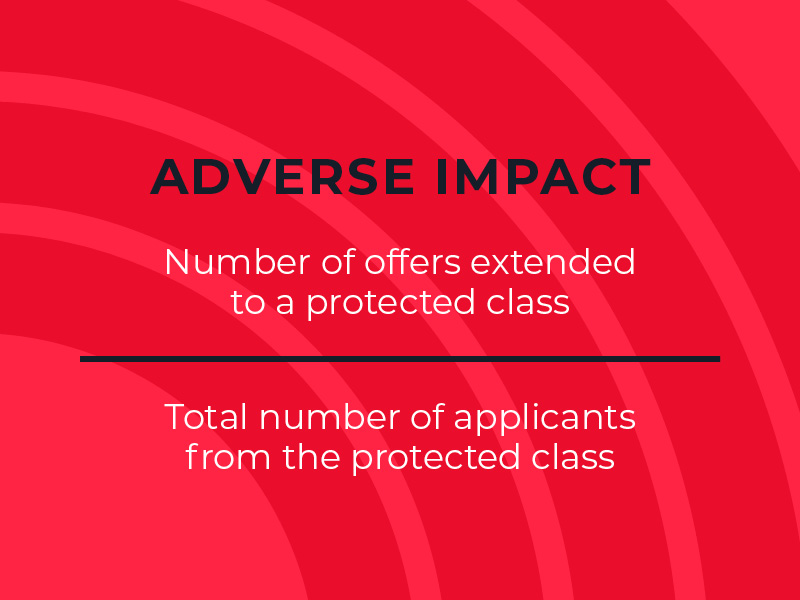15 Recruitment KPIs and Metrics You Need to Know
The recruitment process begins when a job posting appears on sourcing channels and ends when a qualified candidate joins the organisation. The health and viability of any company depend on getting this process right.
A company’s recruiting efforts will need to add both current and long-term benefits to the bottom line. And as significant as the process may be, it can also be tiresome and costly, not to mention that success can be subjective in the short term. Thus, it is to a company’s advantage to make use of certain metrics, recruitment KPIs, to assess and improve its hiring practises.
What are Recruitment KPIs?
Recruitment KPIs (key performance indicators) are metrics that offer insights into the effectiveness of an organisation’s recruitment process.
How long did it take to hire the right candidate? What were the costs? Which sourcing channels produced the best candidates, and so on?
These key performance indicators are derivations of data collected throughout the hiring process. And by customising its key performance indicators, a company can meet its hiring objectives through optimum use of resources.
Recruitment KPIs can streamline and enhance the hiring process, offering all parties a greater chance for long-term success.
Recruitment KPIs vs Metrics
KPIs are vital measurements; tools for strategizing how best to fulfil the hiring objectives of the organisation.
Metrics are also important measurements, offering insights into areas of interest and development, but they are not vital for the process.
A company can look at recruitment KPIs and boil them down to numbers, ratios, and percentages for a value-based indicator that is easy to read and understand.
Metrics simply offer numbers that give the organisation an overview of the hiring process, whereas KPIs will reveal the number of qualified candidates, cost of the hiring process, time taken for the fulfilment of a position, etc.
KPIs take metrics from particular aspects of the hiring process, ensuring specific criteria are under consideration.
This ability to direct priorities makes it easier to track progress, improve, and revise recruitment indicators accordingly.
Why do we Need Recruitment KPIs?
Time, energy, and money must be expended with care. But without the use of proper metrics, pinpointing areas in need of improvement will use up excessive amounts of all three precious resources.
Tracking metrics and arriving at a conclusion can be difficult and time-consuming. Recruitment KPIs makes it easier.
Recruitment KPIs can help the organisation to identify areas within the hiring process to be improved.
Understanding these indicators is essential to helping the organisation grow by equipping various recruitment strategies that suit the needs of the organisation.
It helps with identifying recruitment strategies that align with the goal of the organisation.
The recruitment KPIs are easy to understand and with proper methodology, easy to implement. These metrics are simple and can be understood by everyone.
Important Recruiting KPIs
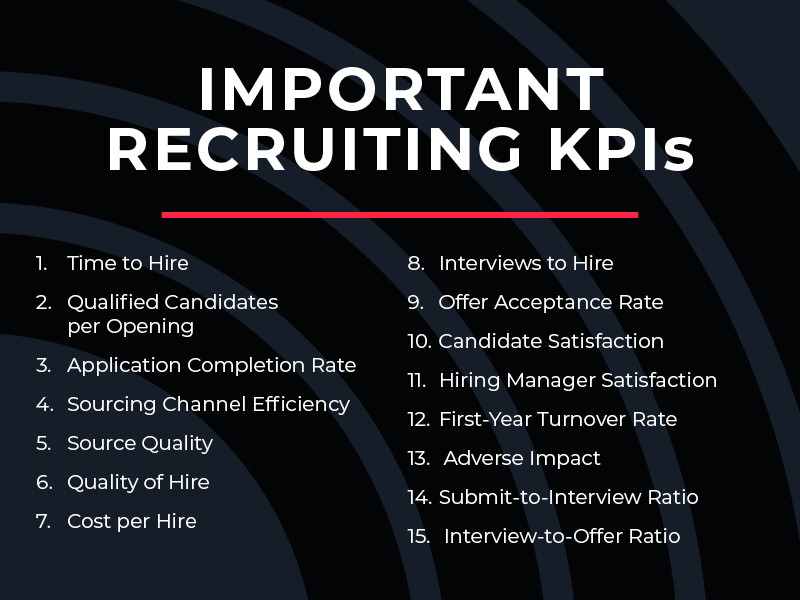
1. Time to Hire

This KPI indicates the time taken by the candidate, from entering the recruitment funnel to the day the candidate accepts the offer of employment.
Time to Hire may vary for different departments, but it offers an idea of how much time each department takes to recruit a new employee.
This KPI can help the recruitment team to plan out a timeline for expanding a team or recruiting candidates for a new project.
At times, there might be a need to fill a position as quickly as possible. In such cases, this KPI would give an idea of the expected time for the fulfilment of the position.
2. Qualified Candidates per Opening
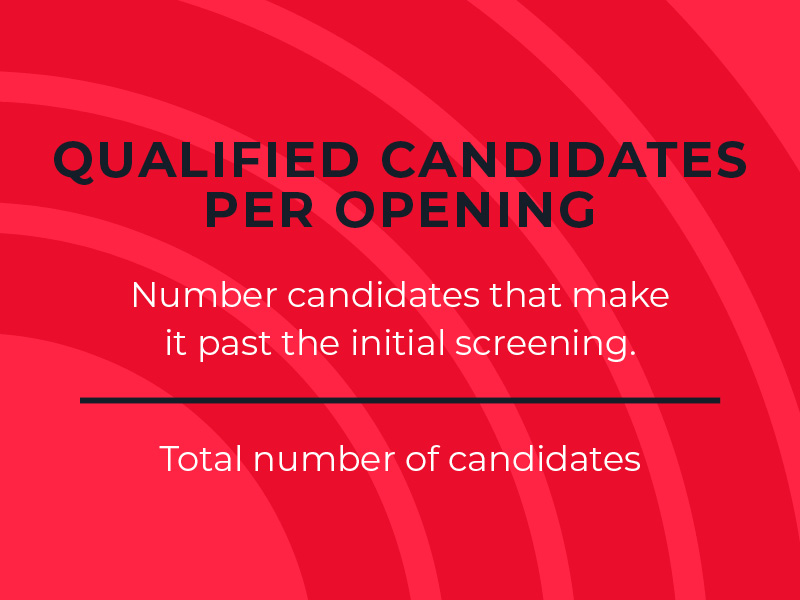
Qualified Candidates per Opening refers to the candidates that make it past the initial screening.
That is, out of all the candidates who applied for a job, this is the number of candidates that meet the qualification criteria. They can move to the second stage of the hiring process.
It provides information about sourcing methods and their efficacy, given that not all candidates who apply for the role will be qualified. This indicator will reveal how many qualified candidates one can expect from a specific recruiting funnel.
3. Application Completion Rate
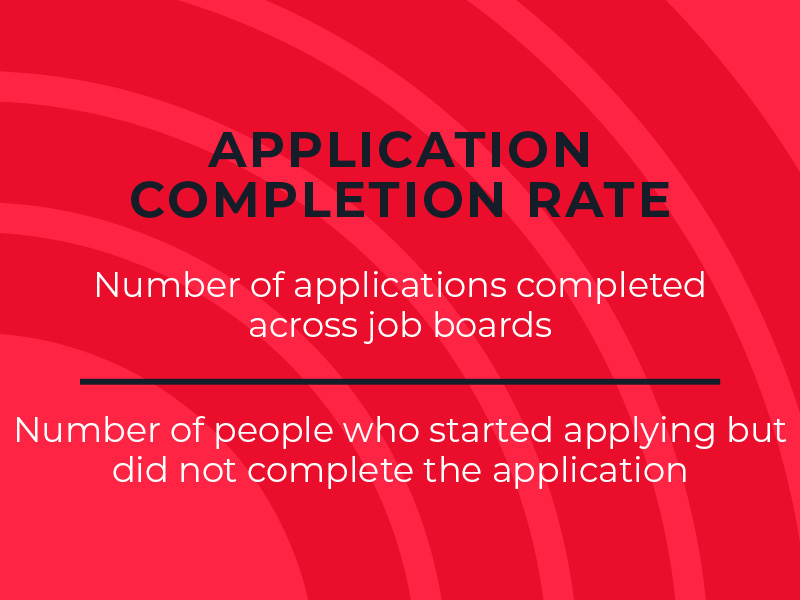
Candidates may start an application and abandon it halfway for many reasons.
The application completion rate gives the metrics of the number of candidates who started to fill out the application and completed it before submitting it.
Having a low application completion rate means there might be an error in the application form. In such cases, the application should be given a thorough check to ensure the instructions are clear and the interface friendly.
This KPI is useful for the recruiters to know more about the status of the job application and the percentage of people that find themself qualified for the job.
4. Sourcing Channel Efficiency
It is a KPI that measures the volume of candidates a sourcing channel brings into the recruitment process.
The sourcing channel might be job postings, social media, Emails, job ads, etc.
To calculate the efficiency of a sourcing channel, the total number of candidates is divided by the total number of candidates from a specific channel.
After knowing the effectiveness of a sourcing channel, the organisation can focus more on the specific sourcing channel that gives them a higher stream of candidates.
5. Source Quality
While source channel efficiency measures the number of candidates a sourcing channel brings, source quality is a KPI that measures the quality of candidates a channel brings.
Even if a recruitment channel is a good source of candidates, tracking the eligibility of candidates will be of greater interest to a company.
This KPI helps the organisation to effectively utilise its resources and spend only on channels that offer qualified candidates.
Even if a recruitment channel is a good source of candidates, tracking the eligibility of candidates will be of greater interest to a company.
6. Quality of Hire
This KPI is usually difficult to measure as it is only meaningful when evaluating data over a prolonged period.
Quality of Hire refers to how much value a new hire offers to the company. There is no one fixed method for determining the quality of hire.
Quality can be different for every organisation and the factors that work for one might not be needed for the other.
The new hires can offer value to the company in their ways and this is what makes this KPI a bit trickier to measure.
7. Cost per Hire

The Company needs to spend considerably to bring in qualified candidates for any given job.
Cost per Hire gives an idea of the average amount of money the company spends on bringing in someone new.
Looking out for the cost per hire would help the organisation to plan out its budget well ahead of the recruiting process.
It can be used to reveal the departments in an organisation that uses more from the budget for its hiring process.
8. Interviews to Hire
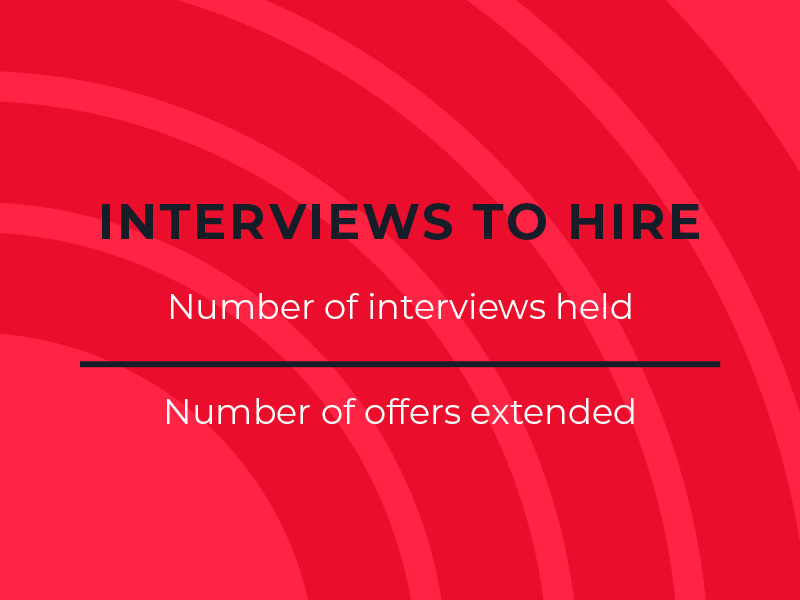
Interviewing is one of the most vital parts of the recruitment process. KPIs surrounding that area should be given focus.
Interviews to hire is a metric that gives the number of interviews a recruiting team goes through until finally making an offer to one candidate.
This KPI could be higher for a specific organisation and a specific job. It is important to notice that the interviews are a time-consuming process and should be improved to reduce the cost for the organisation.
This KPI would change depending on the role and the experience of the said role. It helps with the recruitment process of the company so that an appropriate amount of candidates enter the recruitment funnel before filling a role.
9. Offer Acceptance Rate
The offer acceptance rate is a metric that indicates the recruiting strategy of a company.
It is calculated as a percentage based on the extended offers that are accepted by the candidate.
An offer should be made to the qualified applicants after giving them all the necessary information about the job and the company culture and then letting the candidate make their decision.
A low offer acceptance rate may indicate personal reasons for the candidate to not go through with the recruitment process.
It is important to use this recruitment KPI as truthfully as possible. Sending an offer letter when the company is sure about the candidate’s decision would make this metric to be 100% at all times.
10. Candidate Satisfaction
The perception of the hiring process of a company gives an everlasting impression on the candidate.
A rejected candidate is likely to try for a new open position if the recruiting process had a positive impact on them.
Candidate satisfaction could be measured using various scales and by asking the candidate themselves.
A positive experience in the recruitment process would have a healthy impact on the candidates and would also improve the value of the organisation.
It is always important to collect data on the candidate experience after the entire hiring process regardless of their results.
11. Hiring Manager Satisfaction
Hiring managers satisfaction is also a recruiting KPI that is as important as the Candidate satisfaction metric.
Hiring manager satisfaction can be measured with the help of surveys or short interviews.
If the Hiring manager satisfaction score is low, it could indicate bad hiring metrics and those metrics need to be tweaked.
On the other hand, if the hiring manager score is high, It could indicate that the new hires show potential and are a right fit for the company.
This is a KPI that depends on various aspects of the hiring process. As such, it is important to be truthful with the surveys to get an accurate result.
12. First-Year Turnover Rate
The first-year turnover rate indicates the number of employees who leave the company after a year.
There might be many reasons for an employee leaving the company, they might have had a different expectation for the role or there might have been a better offer.
It is important to conduct an exit interview process to analyse the reason for the employee turnover.
A high first-year turnover rate might indicate a problem with the company culture or might indicate an internal conflict with managers.
13. Adverse Impact
Adverse impact refers to the recruitment metrics that appear neutral but have a hidden discriminatory impact on a protected group.
There is a possibility of workplace bias creeping into the hiring process even without the intent of the recruiters.
To avoid underlying discrimination against a protected class in the workplace, adverse impact metrics are necessary for the discovery of bias.
Keeping track of this recruitment KPI helps the hiring manager identify if there is any bias against a protected group.
The bias against the protected class is present if they are hired at a less than 80% rate.
14. Submit-to-Interview Ratio
Submit-to-interview ratio aka present-to-interview ratio is a measure of the ratio of the number of candidates who applied to the number of candidates presented to the hiring manager.
The submit-to-interview ratio depends heavily on the initial screening of the candidate.
A low submit-to-interview ratio could indicate that the recruiter is too picky on the candidates or that the job posting is misleading the candidates.
A high submit-to-interview ratio would indicate that the initial screening of the recruiting process needs improvement.
A good submit-to-interview ratio is 3:1 or better.
15. Interview-to-Offer Ratio
The interview-to-offer ratio is measured by the number of candidates interviewed to the number of offers given.
A good interview-to-offer ratio is 3:1 or better. A high interview-to-offer ratio indicates that the resources are being exhausted for fewer new hires.
It also gives us an idea of the average amount of time spent on a job opening.
Knowing this could help in managing resources for a specific job and how easy it is to get qualified candidates to enter the recruitment funnel.
Choose your own Recruitment KPIs
Every organisation has its own challenges and goals to take into consideration. In that regard, recruitment KPIs should be custom-made to meet the needs of the organisation.
Among all the recruitment KPIs, not every single KPI would be needed. Depending on the size of the organisation, certain KPIs would be unnecessary.
Hiring metrics may vary for different organisations based on their scale and their domain. In such cases, it should also be taken into consideration before choosing KPIs.
Choosing the wrong KPIs and trying to work with them will be time wasted. Avoid this at all costs.
It is better to get feedback after each and every recruitment process and land on a proper set of recruitment KPIs based on the requirements.
Try out different KPIs to make sure that they help achieve the goals of the organisation.
Frequently Asked Questions
Are KPIs necessary for the growth of an organisation?
It is important to understand whether the recruitment efforts give proper results. For the cost-effective hiring of new candidates and expanding your team, recruitment KPIs are necessary.
Does everyone in an organisation use the same KPIs?
No, every member of the recruitment team would use different KPIs to measure different aspects and stages of the recruitment metrics.
Who uses recruitment KPIs in an organisation?
Recruitment managers, agencies, and consultants all use recruitment KPIs for various purposes.
Can recruitment KPIs be used for organisations of any scale?
Yes, recruitment KPIs can be used for any organisation, customised to fit their specific needs.
What should I keep in mind while choosing a KPI?
Check whether the KPIs in action provide insights towards the end goals of the organisation.
LogicMelon
Award-winning recruitment software that will find, attract, hire and analyse the way you want to work. At LogicMelon, we have experienced software recruitment marketing specialists to help you build effective recruitment solutions supported by the best customer service you’ll find anywhere!
Email: [email protected] or call LogicMelon (UK) +44 (0) 203 553 3667 (USA) +1 860 269 3089
Employee Engagement Ideas for Valentine’s Day 2024
Employee engagement is an HR approach intended to improve the quality of interpersonal dynamics in the workplace.
Cognitive Ability Tests in Recruitment
Cognitive ability tests are used in the recruitment process to evaluate a candidate’s intellectual capabilities, problem-solving skills, and aptitude.
Benefits and Challenges of Outsourcing Recruitment
It is essential for organisations to carefully weigh the pros and cons and choose a outsourcing recruitment partner that aligns with specific needs and objectives.


